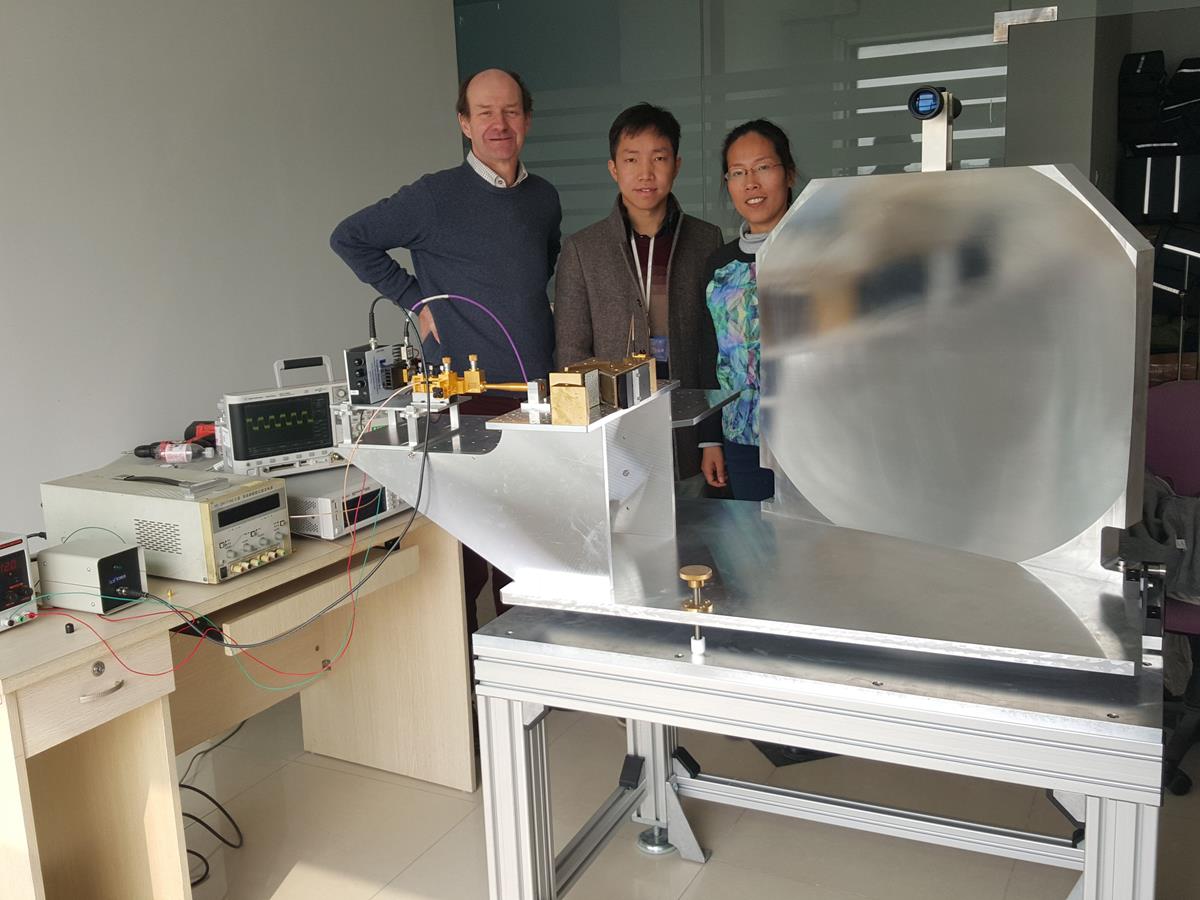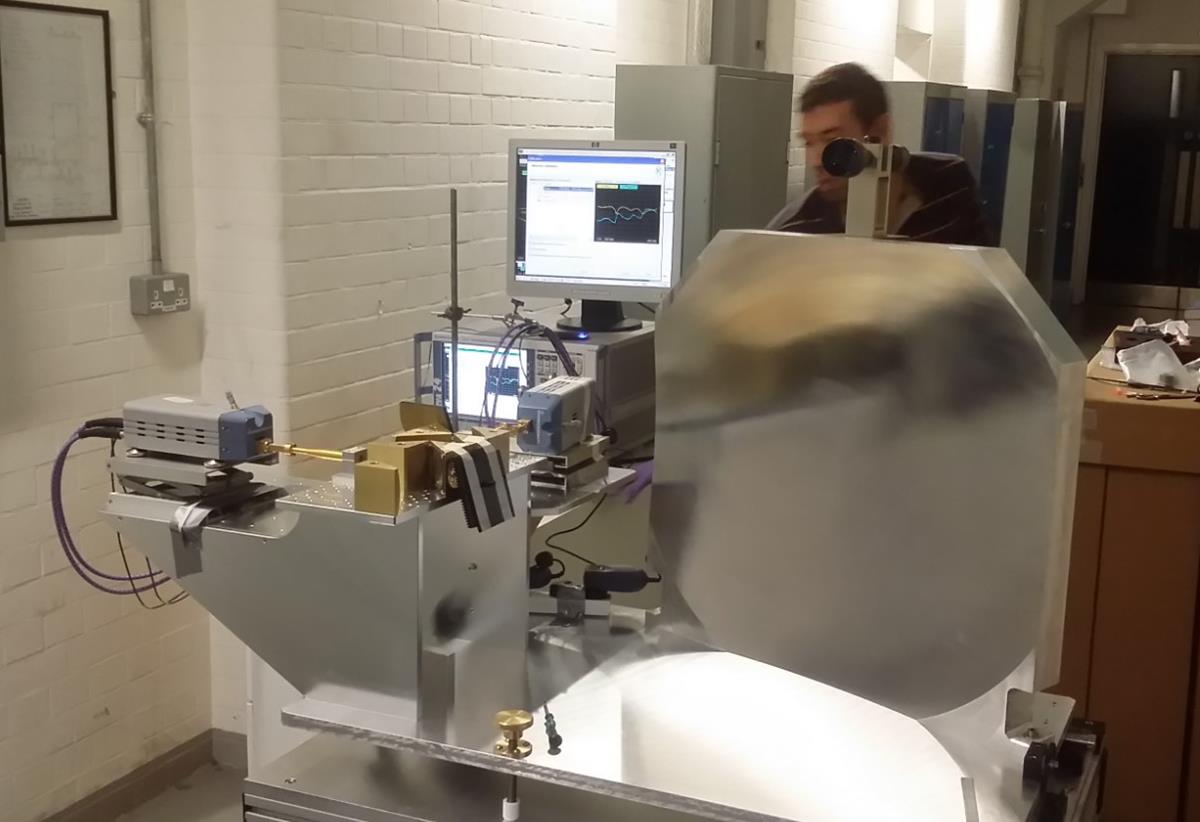340 GHz atmospheric measurements in Qingdao
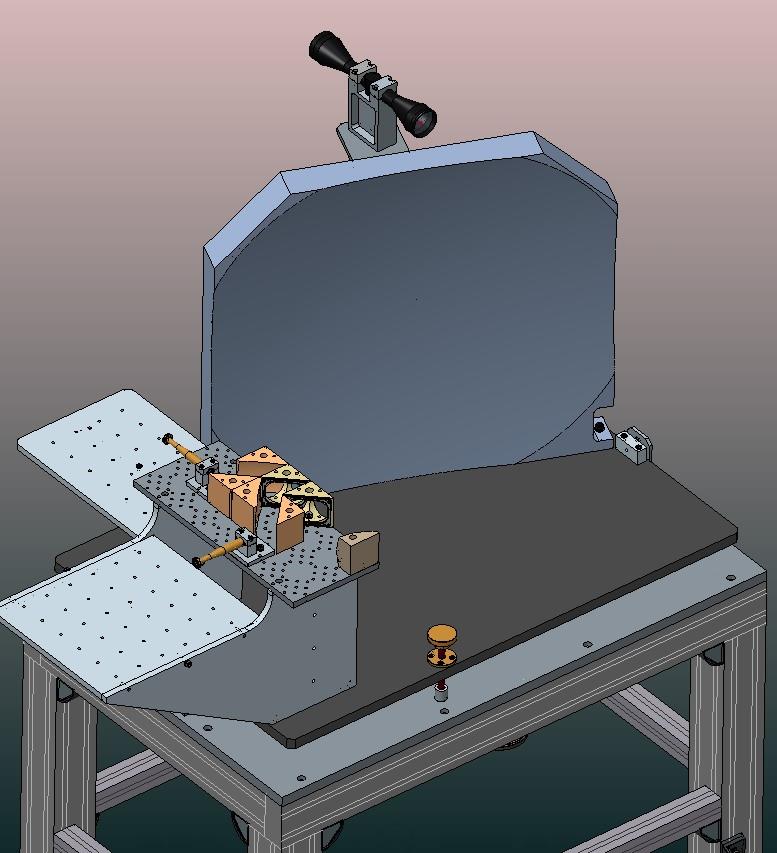
TK has completed the installation of an atmospheric measurements system in CRIRP, Qingdao, China. The transmissometer is designed to measure long-term trends in atmospheric absorption over a 300 Metre path at 340 GHz in the coastal city of Qingdao (famous for its Beer).
The system consists of
- a VDI-supplied multiplier chain source and Schottky detector,
- a Quasi-Optical circulator giving nearly 60dB of Transmit/Receive isolation and
- a offset-fed parabolic 65dBi main antenna giving a 200mm (1/e amplitude radius) beam-width
The CAD drawing of the Transceiver, showing the -6dB high-isolation 62mm cube circulator
The rifle sight, design to provide initial alignment, can be seen on the top of the main mirror.
plus
- an adjustable 1 Metre diameter curved retro-reflector positioned some 150 Metres away on the 6th floor of a nearby building.
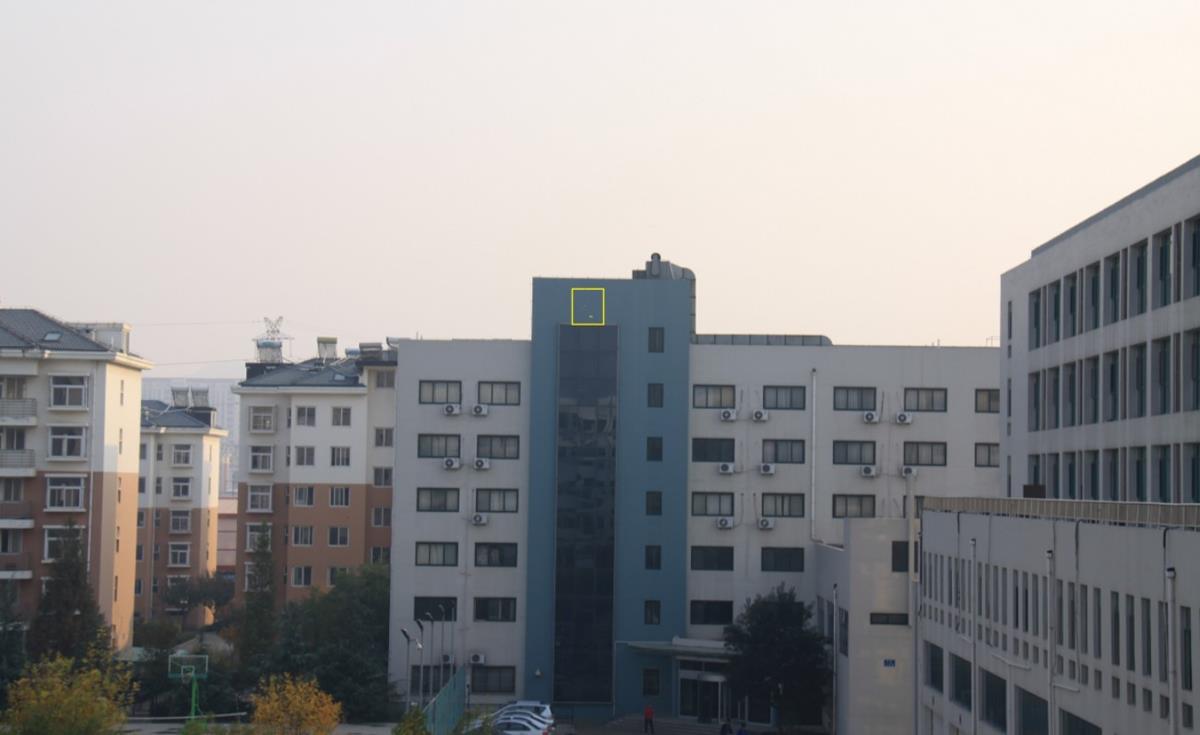
A view from the transceiver room at the CRIRP Laboratory.
TK designed, built and installed the last two items.
Great care was taken to provide both adjustable - but very rigid and fixable - positioning of both the transceiver and the reflector. Rifle sights were used to provide initial angular alignment of the two QO components
The Quasi-Optic structure was tested in Imperial College in the Summer of 2015 - details of the results, including loss and isolation can be found here.
After installation and alignment, initial results in February showed solid return signals over the 300M path-length giving significant Signal/Noise headroom:
The QO transceiver under test in the School of Mines, Imperial College, London.
Images of the installation, showing both the QO and the VDI source and detector are outline below.
Using a Stanford Research Lock-in Amplifier to remove noise, short terms source stability was measured at the 0.3% level. Dynamic range when measuring loss though the 300 M path on a cold February day - with still some increase signal to come from mirror optimization - was significantly better than 20dB.
Short term variation in signal transmission - over periods of a few minutes - was around 7% or 0.3dB: With a predicted 300 M atmospheric attenuation of perhaps 8dB, this corresponds to a change in atmospheric absorption of 4% over short periods, a quite plausible figure.
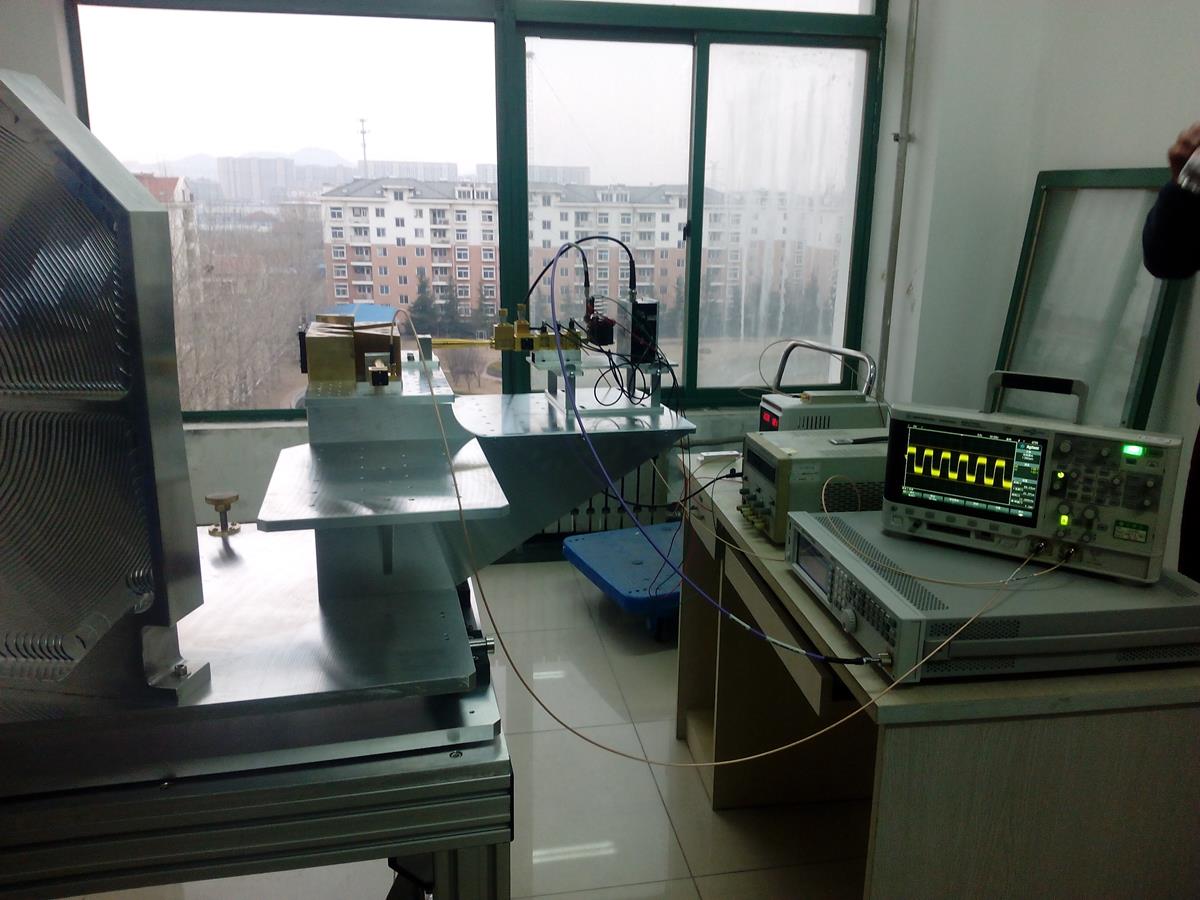
The returned square-wave modulated signal - from the mirror in the distant building - can be clearly seen on the 'scope.
With thanks to CRIRP and Matrix staff...
